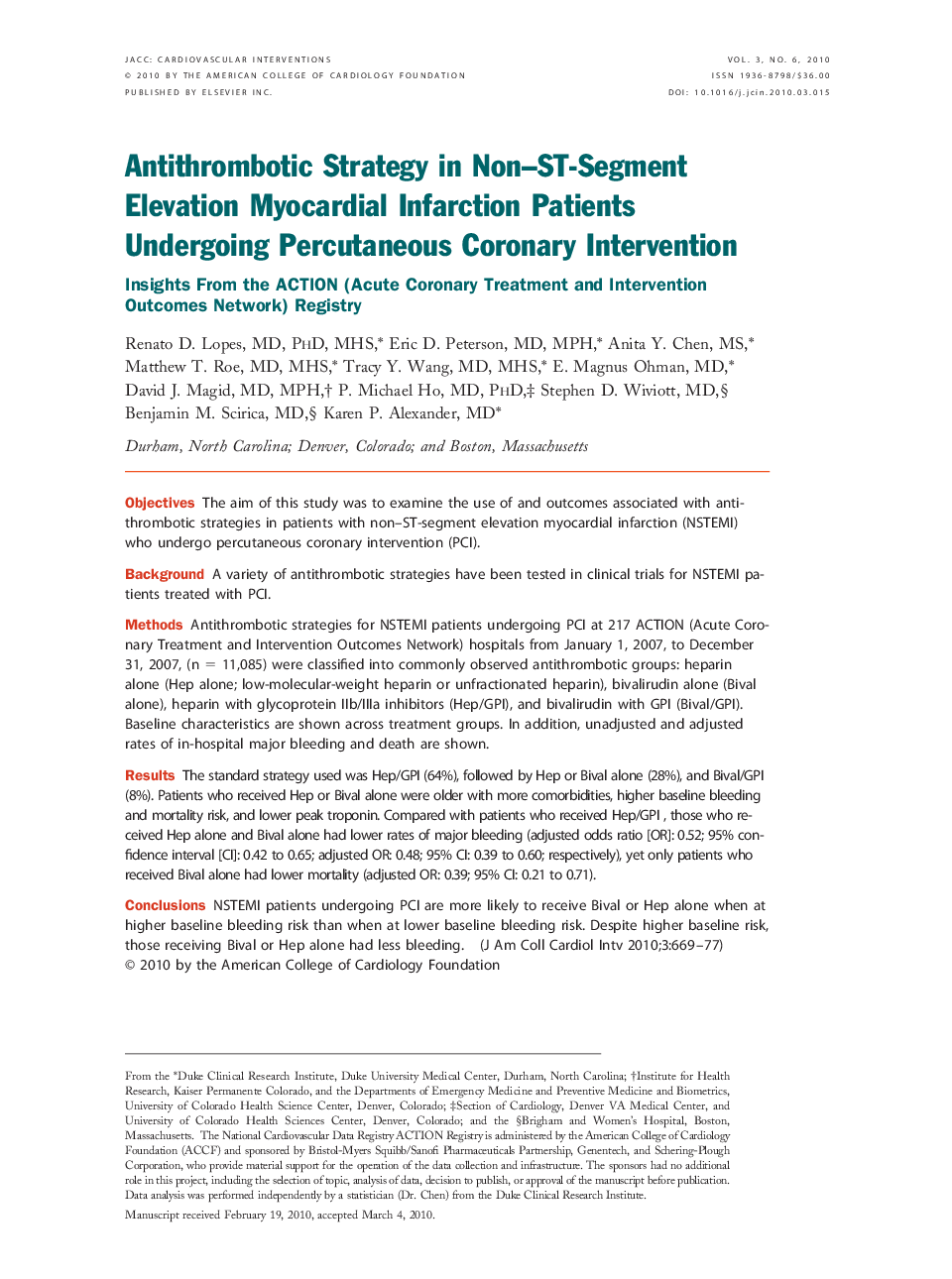| کد مقاله | کد نشریه | سال انتشار | مقاله انگلیسی | نسخه تمام متن |
|---|---|---|---|---|
| 2941241 | 1177061 | 2010 | 9 صفحه PDF | دانلود رایگان |

ObjectivesThe aim of this study was to examine the use of and outcomes associated with antithrombotic strategies in patients with non–ST-segment elevation myocardial infarction (NSTEMI) who undergo percutaneous coronary intervention (PCI).BackgroundA variety of antithrombotic strategies have been tested in clinical trials for NSTEMI patients treated with PCI.MethodsAntithrombotic strategies for NSTEMI patients undergoing PCI at 217 ACTION (Acute Coronary Treatment and Intervention Outcomes Network) hospitals from January 1, 2007, to December 31, 2007, (n = 11,085) were classified into commonly observed antithrombotic groups: heparin alone (Hep alone; low-molecular-weight heparin or unfractionated heparin), bivalirudin alone (Bival alone), heparin with glycoprotein IIb/IIIa inhibitors (Hep/GPI), and bivalirudin with GPI (Bival/GPI). Baseline characteristics are shown across treatment groups. In addition, unadjusted and adjusted rates of in-hospital major bleeding and death are shown.ResultsThe standard strategy used was Hep/GPI (64%), followed by Hep or Bival alone (28%), and Bival/GPI (8%). Patients who received Hep or Bival alone were older with more comorbidities, higher baseline bleeding and mortality risk, and lower peak troponin. Compared with patients who received Hep/GPI , those who received Hep alone and Bival alone had lower rates of major bleeding (adjusted odds ratio [OR]: 0.52; 95% confidence interval [CI]: 0.42 to 0.65; adjusted OR: 0.48; 95% CI: 0.39 to 0.60; respectively), yet only patients who received Bival alone had lower mortality (adjusted OR: 0.39; 95% CI: 0.21 to 0.71).ConclusionsNSTEMI patients undergoing PCI are more likely to receive Bival or Hep alone when at higher baseline bleeding risk than when at lower baseline bleeding risk. Despite higher baseline risk, those receiving Bival or Hep alone had less bleeding.
Journal: JACC: Cardiovascular Interventions - Volume 3, Issue 6, June 2010, Pages 669–677